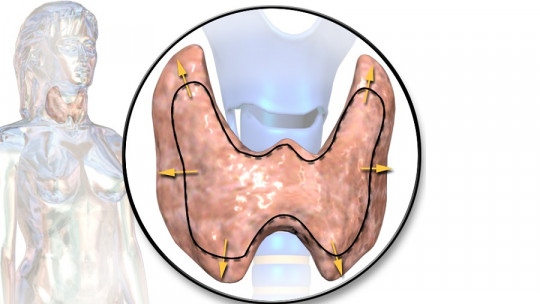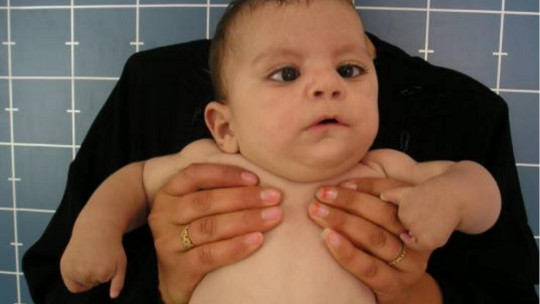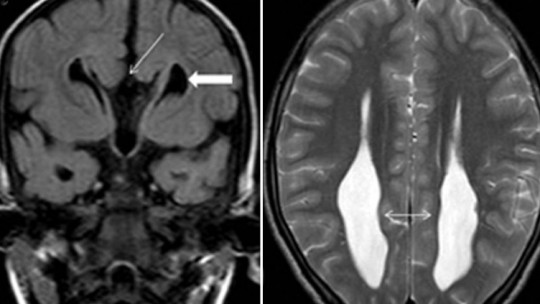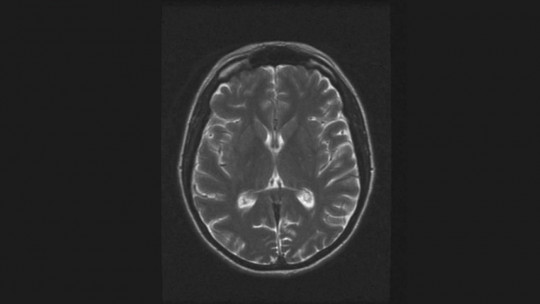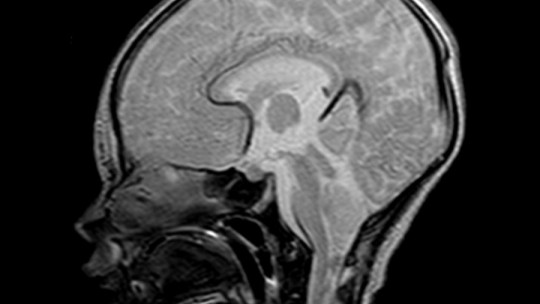
Rare (RD) or uncommon diseases are those that have a low prevalence in the population. To be considered rare, a pathology has to affect less than 5 out of every 10,000 inhabitants at any given place and time.
These data somewhat contradict the reality observed on a practical level, since the World Health Organization (WHO) estimates that there are nearly 7,000 rare diseases that affect 7% of the global population. Of course, this is a non-negligible figure.
Today we bring you one of these rare pathologies that, at the beginning of the 20th century, was estimated to have a prevalence of 1 per 1,000 newborns. This figure has not maintained its validity over time because, unfortunately, new diagnostic techniques have shown that it is much more common than previously believed. Immerse yourself with us in the world of patients with Arnold Chiari malformation.
What is Arnold Chiari malformation?
The Arnold Chiari malformation is a generally congenital disease, which consists of an anatomical alteration in the base of the newborn’s skull. This pathology is characterized by the descent of part or almost all of the cerebellum through the foramen magnum (occipital foramen) to the cervical canal.
In other words, when a part of the skull is smaller than normal or deformed, the cerebellum is pushed towards the foramen magnum and spinal canal. This causes a series of characteristic symptoms in the patient, which are due to the following reasons:
This rare disease, disabling and progressive in nature, affects 0.5% of the world’s population., with 80% of the patients being female. Beyond the severity of the most pronounced cases, various informative portals affirm that many children with this anomaly do not realize that they suffer from it, since they never present symptoms.
Guys
Talking about the symptoms of Arnold Chiari malformation is practically impossible without differentiating the different degrees in various blocks, since It is estimated that this group of malformations in the central nervous system brings together more than 100 different clinical signs.. Therefore, below we show you the different types of the disease, cataloged according to the parts of the brain that extend into the spinal cavity. Go for it.
Type 0
Patients who have syringomyelia fall into this category. (a fluid-filled cyst within the spinal cord) with minimal or no evidence of tonsillar herniation (i.e., slipped cerebellum). The appearance of this liquid mass responds to a hydrodynamic alteration of the cerebrospinal fluid (CSF) at the level of the foramen magnum.
Type I
Type I is characterized by a dislocation of the cerebellar tonsils (the inner part of the cerebellum) through the foramen magnum (more than 5 millimeters). This is the most common type of all and, luckily, the patient may not present any obvious symptoms.
Although the general incidence of this type of malformation is not well known, it is estimated that 50 to 70% of patients present associated syringomyelia and 10% of cases are also associated with hydrocephalus, that is, an excessive buildup of cerebrospinal fluid within the skull. It should be noted that this characteristic type is usually diagnosed from the second-third decade of the patient’s life, since symptoms do not usually appear during childhood.
Among the most common signs and symptoms of Arnold Chiari type I malformation are the following:
In any case, it is worth noting that 15 to 30% of patients with Chiari type I do not have symptoms at any time but, even so, symptomatic cases can go to medical specialists who address the pathology through surgery.
Type II
We advance on the scale of pathological severity, since Chiari type II malformation usually shows more obvious symptoms and these develop during childhood. In this case a caudal herniation occurs through the foramen magnum of the cerebellar vermis, brain stem and fourth ventriclethat is, a more pronounced decrease in cerebellar tissue than that of type I. This pathology can be a cause of death during infancy or early childhood and, unlike the two previous variants, requires surgery.
In addition to the symptoms already listed previously, patients with this type present syringomyelia and hydrocephalus in 90% of cases, but an accessory pathology appears: almost 15% of those affected may present spina bifida, that is, a series of defects in the column and spinal cord due to poor closure and development of the neural tube. Most neonates with severe spina bifida end up dying prematurely.
Type III
We are facing the rarest and most serious type of Arnold Chiari malformation of all.. In this case, the herniated cerebellum and brain stem enter the cervical spinal canal (often accompanied by the fourth cerebral ventricle) and compress the spinal cord. In addition to all the symptoms mentioned in type I and II, this variety presents serious associated neurological signs: severe decrease in mental and physical capacity and seizures, among others.
Type IV
This is the most recently described type. Also known as cerebellar hypoplasia, It is characterized by underdevelopment of the cerebellum, that is, it is located in its normal position, but it is missing some parts. In this case there is no associated tissue hibernation.
Other pathologies associated with Arnold Chiari malformation
As we have already seen in previous lines, syringomyelia and hydrocephalus are pathologies that present together with this malformation, with spina bifida being an exceptional occurrence. Despite this, we have left ourselves in the dark some physiological imbalances associated with this very specific clinical picture. We show them to you briefly:
As we can see, the Arnold Chiari malformation presents with multiple signs, symptoms and accessory conditions. In general, depending on the severity of the clinical picture, Cranial, spinal, ocular, otorhinolaryngological, scoliosis, sleep problems, fatigue, axial skeletal pain may appear. and all the disorders that we have mentioned in previous lines. Unfortunately, if Chiari type II and III patients do not lack something, it is aggressive and clear symptoms.
Summary
Rare diseases are those that affect less than 5 people per 10,000 inhabitants and, despite being considered as such in several medical portals, the Arnold Chiari malformation seems to affect 0.5% of the global population, that is That is, one in every 200 inhabitants, all this without counting the mild type I pathological conditions that will never be diagnosed.
It is impressive to put these results in perspective because, if we take them into account, it is possible that more than one of the readers who have been interested in this space have known a person with this malformation and have not realized it. Of course, the more diagnostic tools advance, the more we realize that a rare disease may not be so rare.
Bibliographic references:
- Chiari malformation, mayoclinic.org. Collected on November 13 at https://www.mayoclinic.org/es-es/diseases-conditions/chiari-malformation/symptoms-causes/syc-20354010
- Chiari malformation, National Institute of Neurological disorders and Stroke. Collected on November 13 at https://espanol.ninds.nih.gov/trastornos/malformaciones_de_chiari.htm
- Chiari malformation, Radyschildren.org. Collected on November 13 at https://www.rchsd.org/health-articles/malformacin-de-arnold-chiari/
- Chiari malformation type I, Kidshealth.org. Collected on November 13 at https://kidshealth.org/es/parents/chiari-esp.html
- Arnold-Chiari malformations, RGS Neurosurgery Unit. Collected on November 13 at https://neurorgs.net/docencia/sesiones-residentes/malformaciones-de-arnold-chiari/#Chiari_0
- Chiari malformations, Medlineplus.gov. Collected on November 13 at https://medlineplus.gov/spanish/chiarimalformation.html
- Martínez-Sabater, A. (2014). Arnold-Chiari malformation: loss of smile. Nursing Index, 23(4), 256-259.
- Ruiz Hernández, I., & Cano Soler, A. (2010). Arnold Chiari malformation type I. Case presentation. Electronic Medical Journal, 32(5), 0-0.

